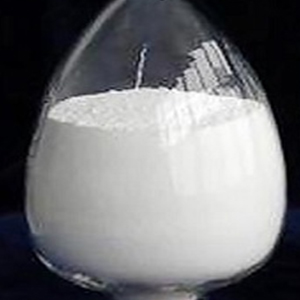
Synonyms: Bismuth(III) carbonate basic, Bismuth oxycarbonate
CAS Number: 5892-10-4,
Molecular Weight: 509.97,
Chemical Formula: (BiO)2CO3,
EINECS EC Number: 227-567-9,
Bismuth subcarbonate (BiO)2CO3, sometimes written Bi2O2(CO3) is a chemical compound of bismuth containing both oxide and carbonate anions. Bismuth is in the +3 oxidation state.
Assay: Dissolve about 500 mg of Bismuth Subcarbonate, accurately weighed, in 3 mL of nitric acid. Dilute with water to 250 mL, add 0.3 mL of xylenol orange, and titrate with 0.05 M edta disodium to a yellow endpoint. Each mL of 0.05 M edta disodium is equivalent to 12.75 mg of (BiO)2CO3.